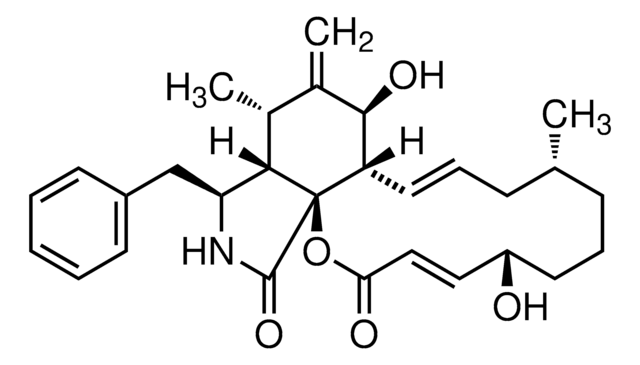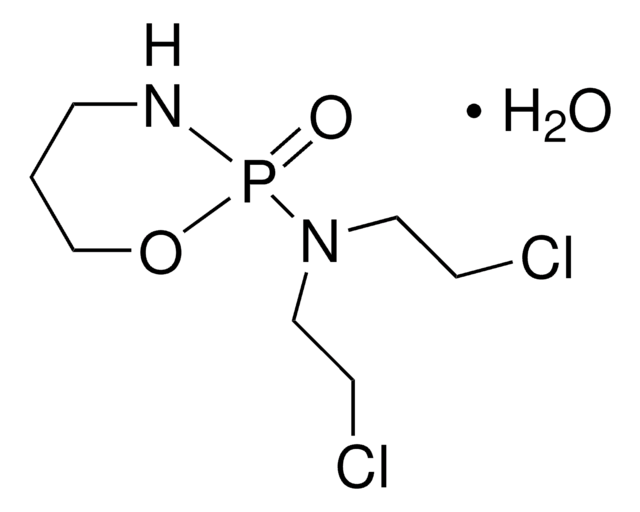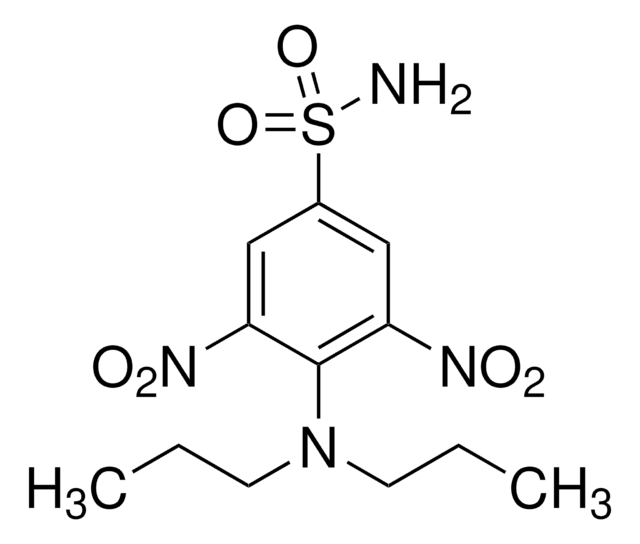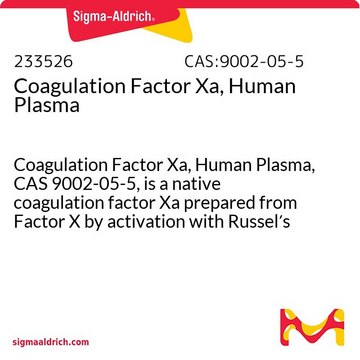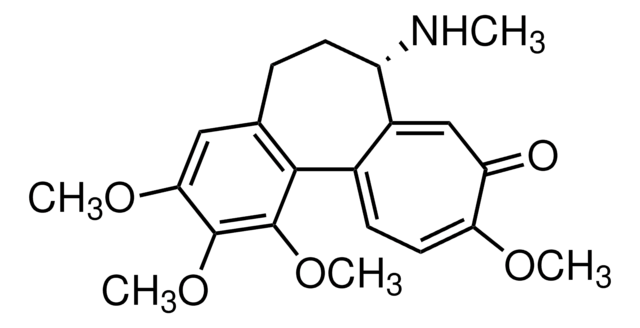234115
Colchicine, Colchicum autumnale
Colchicine, Colchicum autumnale, CAS 64-86-8, is an inhibitor of mitosis that disrupts microtubules and inhibits tubulin polymerization. Induces apoptosis in PC12 and cerebellar granule cells.
Synonyme(s) :
Colchicine, Colchicum autumnale
About This Item
Produits recommandés
Niveau de qualité
Description
Merck USA index - 14, 2471
Essai
≥94% (HPLC)
Forme
powder
Fabricant/nom de marque
Calbiochem®
Conditions de stockage
OK to freeze
protect from light
Couleur
yellow to off-white
Solubilité
ethanol: 10 mg/mL
water: soluble
Conditions d'expédition
ambient
Température de stockage
10-30°C
Chaîne SMILES
N([C@H]1CCc2c(c(c(c(c2)OC)OC)OC)c3c1c[c](c(cc3)OC)=O)C(=O)C
InChI
1S/C22H25NO6/c1-12(24)23-16-8-6-13-10-19(27-3)21(28-4)22(29-5)20(13)14-7-9-18(26-2)17(25)11-15(14)16/h7,9-11,16H,6,8H2,1-5H3,(H,23,24)/t16-/m0/s1
Clé InChI
IAKHMKGGTNLKSZ-INIZCTEOSA-N
Description générale
Actions biochimiques/physiologiques
Inhibitor of mitosis
Avertissement
Autres remarques
Lindenboim, L., et al. 1995. J. Neurochem.64, 1054.
Leung, M.F., and Sartorelli, A.C. 1992. Leuk. Res.16, 929.
Santell, L. 1992. Exp. Cell Res. 201, 358.
Salmon, E.D., et al. 1984. J. Cell Biol.99, 1066.
Informations légales
Mention d'avertissement
Danger
Mentions de danger
Conseils de prudence
Classification des risques
Acute Tox. 2 Oral - Muta. 1B
Code de la classe de stockage
6.1A - Combustible acute toxic Cat. 1 and 2 / very toxic hazardous materials
Classe de danger pour l'eau (WGK)
WGK 3
Point d'éclair (°F)
Not applicable
Point d'éclair (°C)
Not applicable
Listes réglementaires
Les listes réglementaires sont principalement fournies pour les produits chimiques. Seules des informations limitées peuvent être fournies ici pour les produits non chimiques. L'absence d'indication signifie qu'aucun des composants n'est répertorié. Il incombe à l'utilisateur de s'assurer de l'utilisation sûre et légale du produit.
EU REACH Annex XVII (Restriction List)
Certificats d'analyse (COA)
Recherchez un Certificats d'analyse (COA) en saisissant le numéro de lot du produit. Les numéros de lot figurent sur l'étiquette du produit après les mots "Lot" ou "Batch".
Déjà en possession de ce produit ?
Retrouvez la documentation relative aux produits que vous avez récemment achetés dans la Bibliothèque de documents.
Les clients ont également consulté
Notre équipe de scientifiques dispose d'une expérience dans tous les secteurs de la recherche, notamment en sciences de la vie, science des matériaux, synthèse chimique, chromatographie, analyse et dans de nombreux autres domaines..
Contacter notre Service technique
